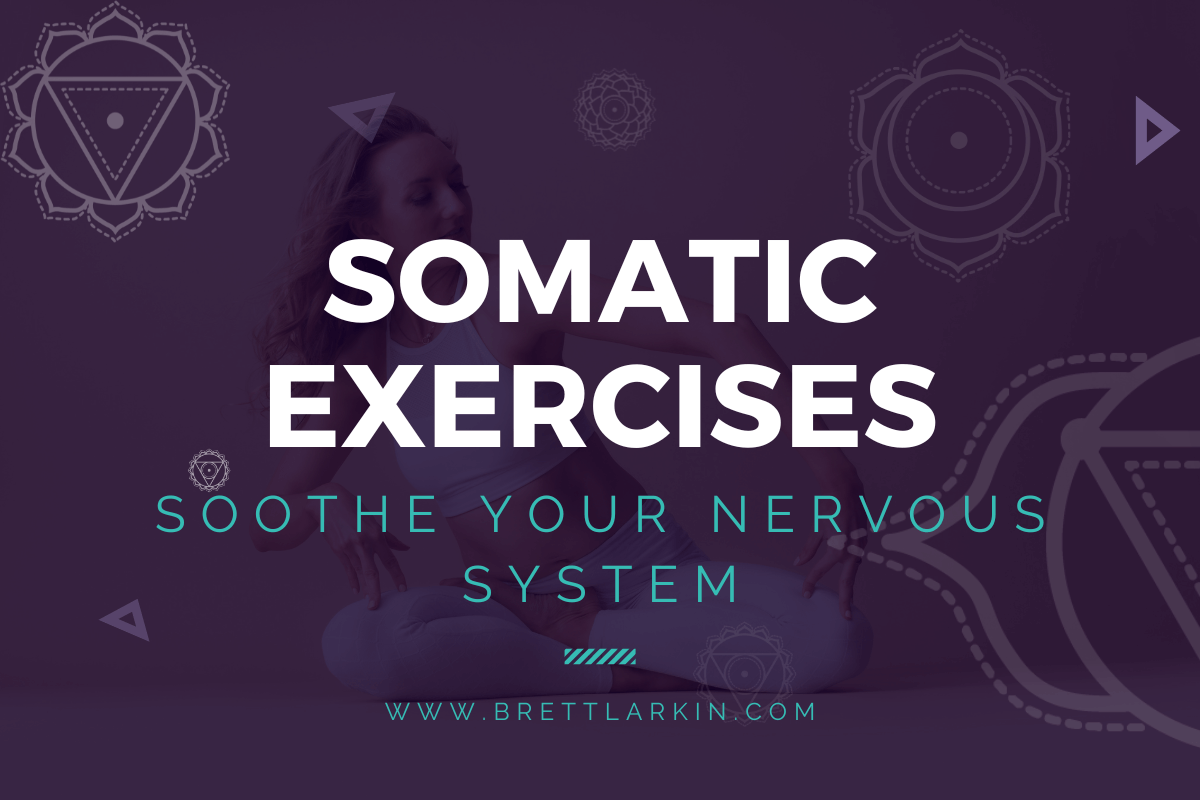Do you ever feel like your head isn’t attached to your body?
Most of us are lacking in the area of mind-body connection. I mean, just look at Zoom! We’re a bunch of talking heads, literally!
This is why I love somatic exercises—because they help you get back in your body, create a strong mind-body connection, and soothe your nervous system.
Body awareness is so important for your mental health and emotional awareness. By incorporating somatic movements into your day, you’ll have a somatic release of physical tension and feel a deep sense of stress relief. And who doesn’t want that?!
So where does one begin with somatic practices? It’s easier than you think.
What Are Somatic Exercises?

Somatic exercises are movements that deepen your mind body connection. Every somatic exercise has a focus on your internal body awareness, helping you reconnect your head with your body.
Unlike traditional workouts that emphasize external performance, somatic exercises prioritize how movements feel from the inside out, aiming to release tension and promote relaxation. You become aware of your bodily sensations through body scans and deeply noticing your internal sensations.
Somatic therapy uses somatic experiencing to help people release trauma, stress, and even for those dealing with post traumatic stress disorder. Through somatic movement and somatic therapy exercises, along with deep breathing, people are able to release long-held patterns and live more fully in the present moment.
When it comes to yoga, somatic stretching and sensory awareness is a natural fit! Incorporating somatic exercises into your practice can feel like a refreshing reset button for your body and mind.
Imagine hitting pause on your daily to do list to check in with your muscles, joints, and breath. To practice deep diaphragmatic breathing and notice your physical sensations. Every somatic exercise is designed to help you improve your internal awareness—and this has a ripple effect on the rest of your life!
These exercises can range from simple stretches and mindful breathing to more complex sequences designed to enhance bodily awareness and emotional balance. A somatic therapist might recommend specific somatic techniques to deal with chronic pain or physical symptoms.
Somatic therapy techniques and somatic movement is all about moving with intention, deepening your breath, regulating your nervous system, tuning into your sensations, and creating a harmonious connection between your mind and body. Somatic exercises benefit your mental well being and your overall health.
Incorporating somatic exercises into your routine can transform your yoga practice and your life. It’s not just about flexibility or strength; it’s about feeling more grounded and present.
Whether you’re dealing with shallow breathing, stress, chronic pain, or just need a mental break, somatic therapies can provide a profound sense of relief and rejuvenation.
So, next time you roll out your mat, you can bring somatic experiencing into your practice through physical movements. You might be surprised at the depth of calm and clarity it brings.
So, how do you do somatic exercise? Well, there are a few types of exercises you want to be aware of…
Take my feminine energy quiz to get a recommended practice for balancing YOUR feminine energy 👇
Types of Somatic Exercises
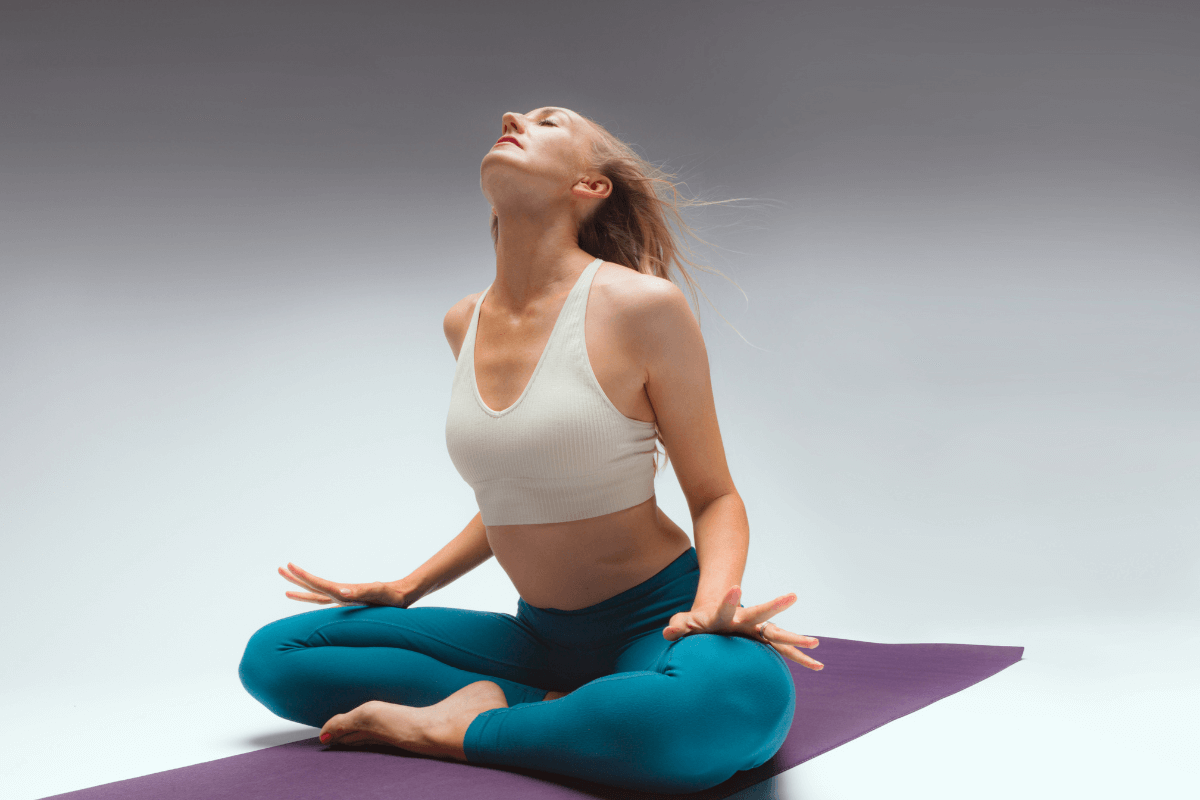
There are a few main types of somatic exercise. If you regularly practice somatic movements, you’ll probably incorporate each one of these. Most somatic exercises incorporate a somatic stretch, deep breaths, and a focus on self awareness.
- Somatic Stretches: These gentle movements focus on releasing tension and improving flexibility by engaging muscles in a mindful way. For example, you might perform a somatic hamstring stretch, where you slowly lengthen the muscles while paying close attention to any sensations or restrictions in the body. Think of this as snail’s pace stretching with a deep breath, grounding techniques, and mindful movement.
- Breathwork: Somatic breathing techniques guide you to breathe deeply and consciously, fostering relaxation and reducing stress. One example is the 4-7-8 breath, where you inhale for a count of 4, hold for 7, and exhale for 8, promoting a sense of calm and centering. When paired with somatic movement, somatic breathing can help with body scans, identifying bodily sensations, and stress relief.
- Somatic Workouts: Unlike traditional workouts that emphasize goals and external performance, somatic workouts prioritize internal awareness and connection. This might look like fluid movements like somatic embodied yoga flows or mindful strength training exercises that focus on alignment and sensation rather than intensity or repetition. Getting to know your own body is more important than working a particular muscle group. Tai chi is an excellent example of an exercise program that’s considered somatic.
- Body scan: If you’ve ever experienced a deep guided body scan in savasana, then you know the power of relaxing through a body scan. By focusing on different body parts, you bring your attention into your body, identifying how your body feels. Not only can this help release muscle tension, but a body scan is a great entryway into somatic therapy techniques.
- Posture exercises: Somatic movement therapy can deepen the connection between your mind body. By holding the body in certain poses, somatic exercise benefits mental health and release of tension, stress, and deepening emotional awareness. Somatic movement can happen on the mat and easily be added to your practice. Somatic elements are easy to add to your traditional asana.
Whether you’re starting your day with a few somatic stretches, taking a mindful breathing break in the middle of a hectic afternoon, or winding down with a somatic workout in the evening, these practices offer valuable tools for cultivating a more embodied and balanced life with tons of benefits…
Experience My Somatic Yoga Workshop (usually $67) FREE!👇

Benefits Of Somatic Exercises

First, somatic exercises offer a variety of perks, including mental benefits, treatment for traumatic stress disorder ptsd, and even calming the vagus nerve.
Here are some of the key advantages:
- Improved mind-body connection
- Reduced muscle tension
- Enhanced flexibility and mobility
- Decreased stress and anxiety
- Increased body awareness
- Enhanced relaxation response
- Improved posture and alignment
- Better emotional regulation and dealing with unresolved emotional issues
- Greater sense of well-being
Whether you work with a trained therapist or simply start noticing how your body feels while on the mat, your mental wellbeing can only improve with somatic exercise. Somatic movement done with a qualified somatic therapist can help you feel a physical sensation and ultimately, reduce stress.
You can take a holistic approach and practice movement therapy on your own.
How Often To Do Somatic Exercises
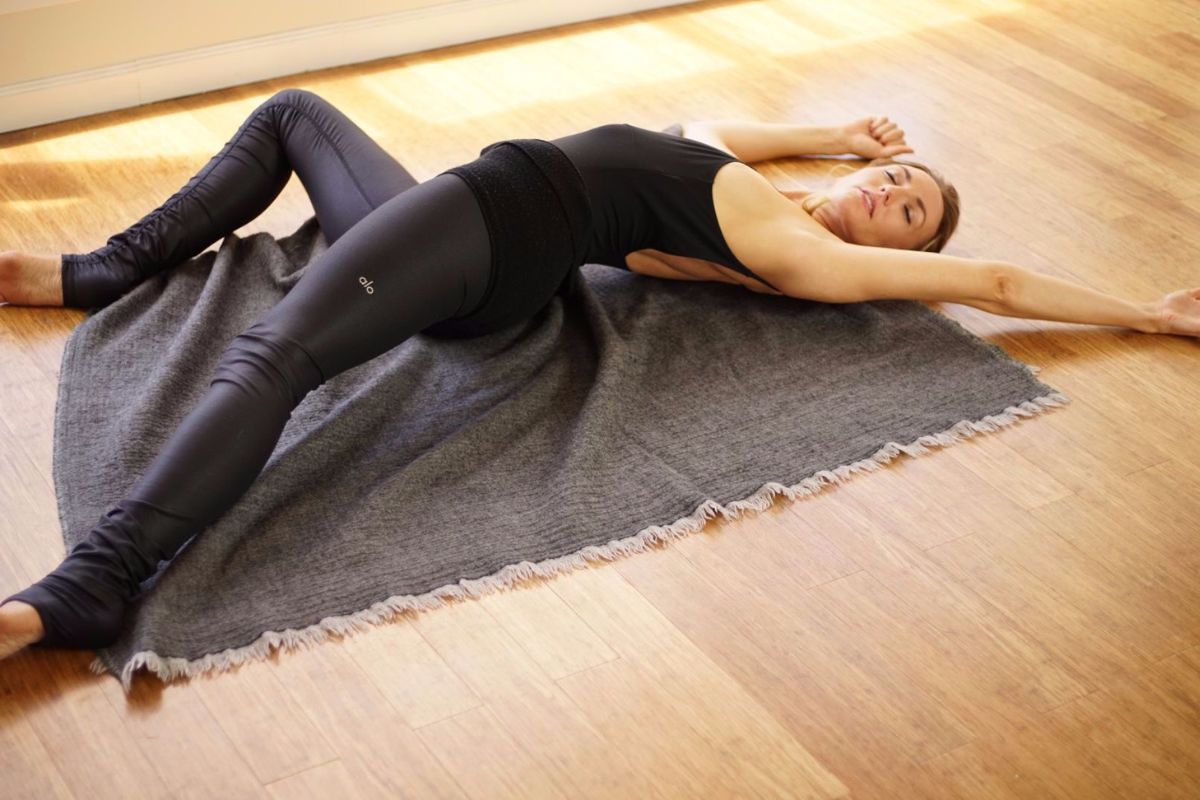
The frequency of doing a somatic exercise varies based on your day-to-day needs. Here’s a clear schedule to help you incorporate some somatic movement effectively into your routine:
| Purpose | Duration and Frequency | Benefits |
|---|---|---|
| For General Well-Being | 15-30 minutes, 3-5 times a week | Maintain a strong mind-body connection, reduce overall stress, and enhance flexibility |
| If You’re Dealing with Chronic Pain or Tension | 10-15 minutes daily | Release tension and improve mobility |
| For High Stress or Anxiety | 5-10 minutes multiple times a day | Calm your nervous system and manage stress levels more effectively |
| Post-Workout Recovery | 10-20 minutes after workouts, 2-3 times a week | Aid in muscle recovery, reduce soreness, and improve flexibility |
| If You’re New to Somatic Exercise | 5-10 minutes a day, gradually increase | Build a habit, gradually increase duration and frequency as comfortable |
By following these suggestions, you can tailor your somatic therapy routine to fit your specific needs.
Whether you’re aiming for general wellness, better mental health, managing pain, or reducing stress, consistency is key to reaping the rewards of somatic practices.
Examples Of Somatic Exercises
Here are a few simple somatic exercises, based in mindful movement and curated from somatic therapy, to get you started on your journey.
Somatic Shoulder Rolls
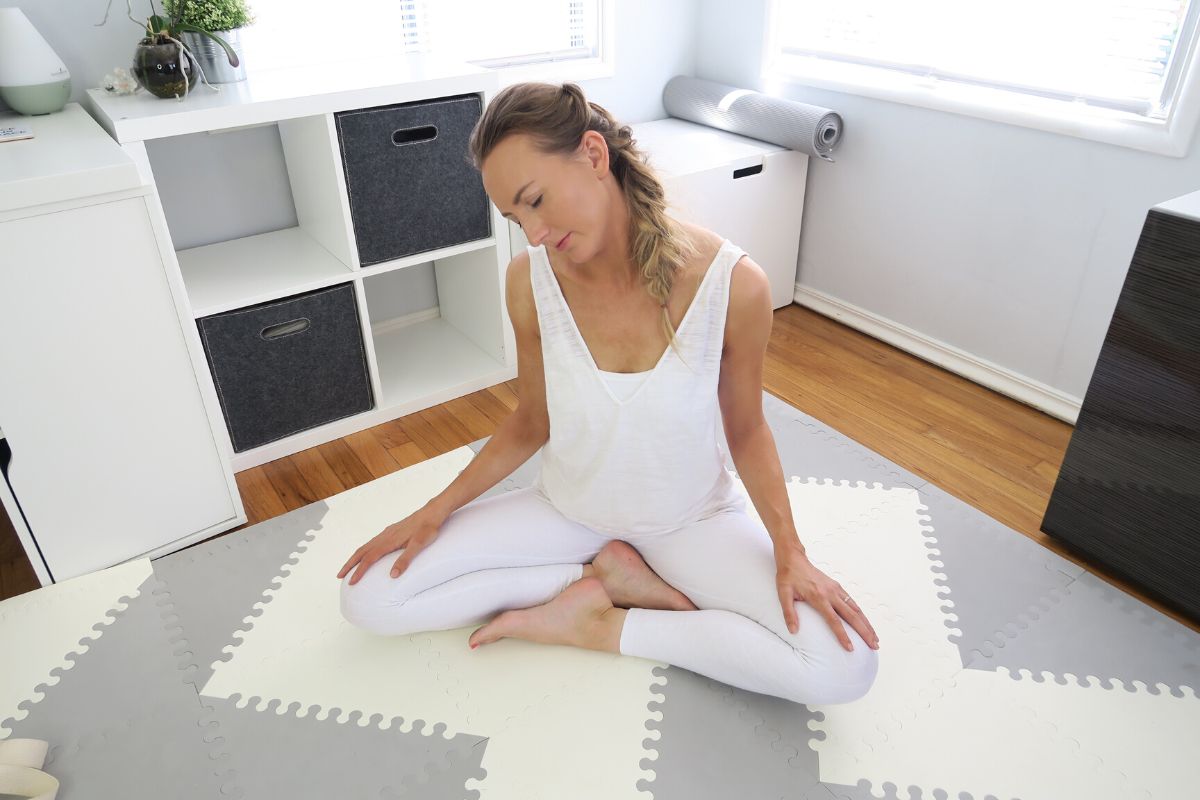
Begin by sitting or standing comfortably. Inhale deeply as you roll your shoulders up towards your ears, then exhale as you roll them back and down.
Repeat this movement slowly and mindfully for several rounds, allowing any tension in your shoulders to melt away.
Bring your left arm up to your left ear, then your right arm up to your right ear.
Move intuitively and in a way that feels best for you. You can take your own therapeutic approach.
Body Scan
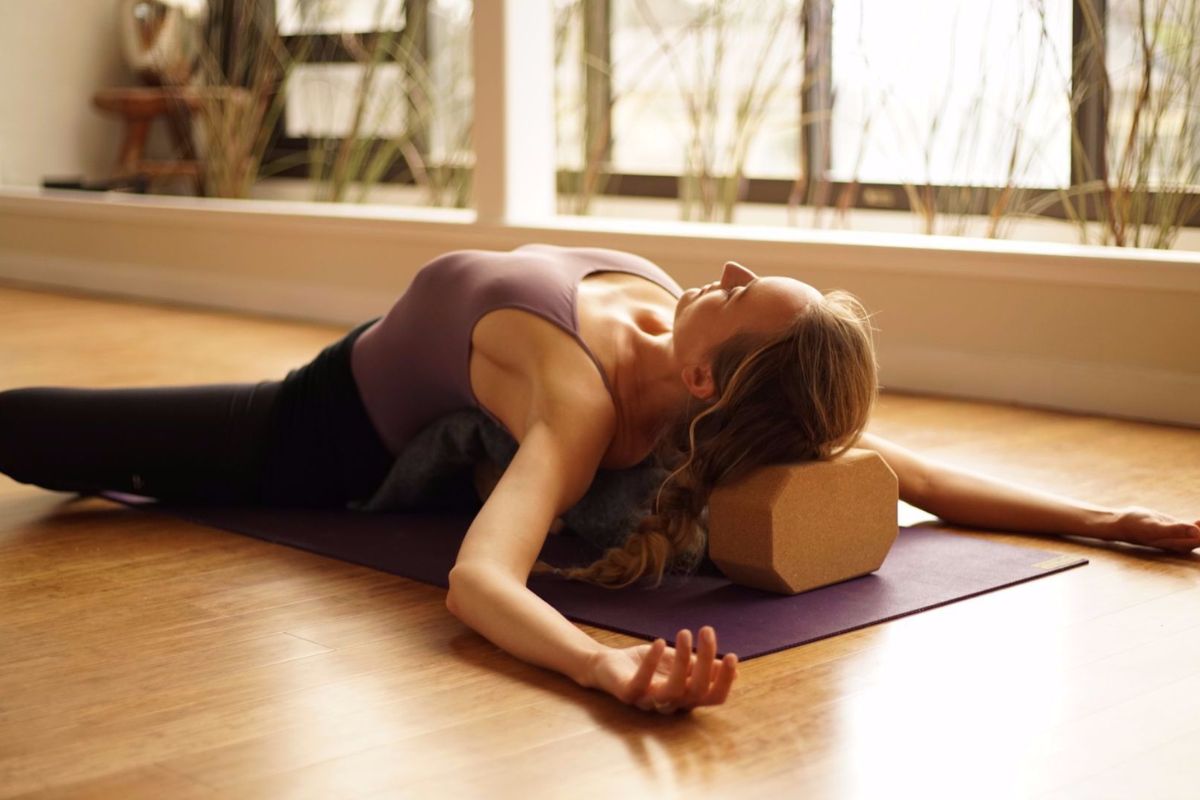
Lie down in a comfortable position, either on your back or in a reclined posture. I suggest savasana. Close your eyes and bring your attention to your breath.
Then, systematically scan your body from head to toe, noticing any areas of tension or discomfort.
With each exhale, imagine releasing and relaxing those areas, allowing your body to become more at ease. Deep breathing is what makes somatic exercises good.
Embodied Cat-Cow Stretch
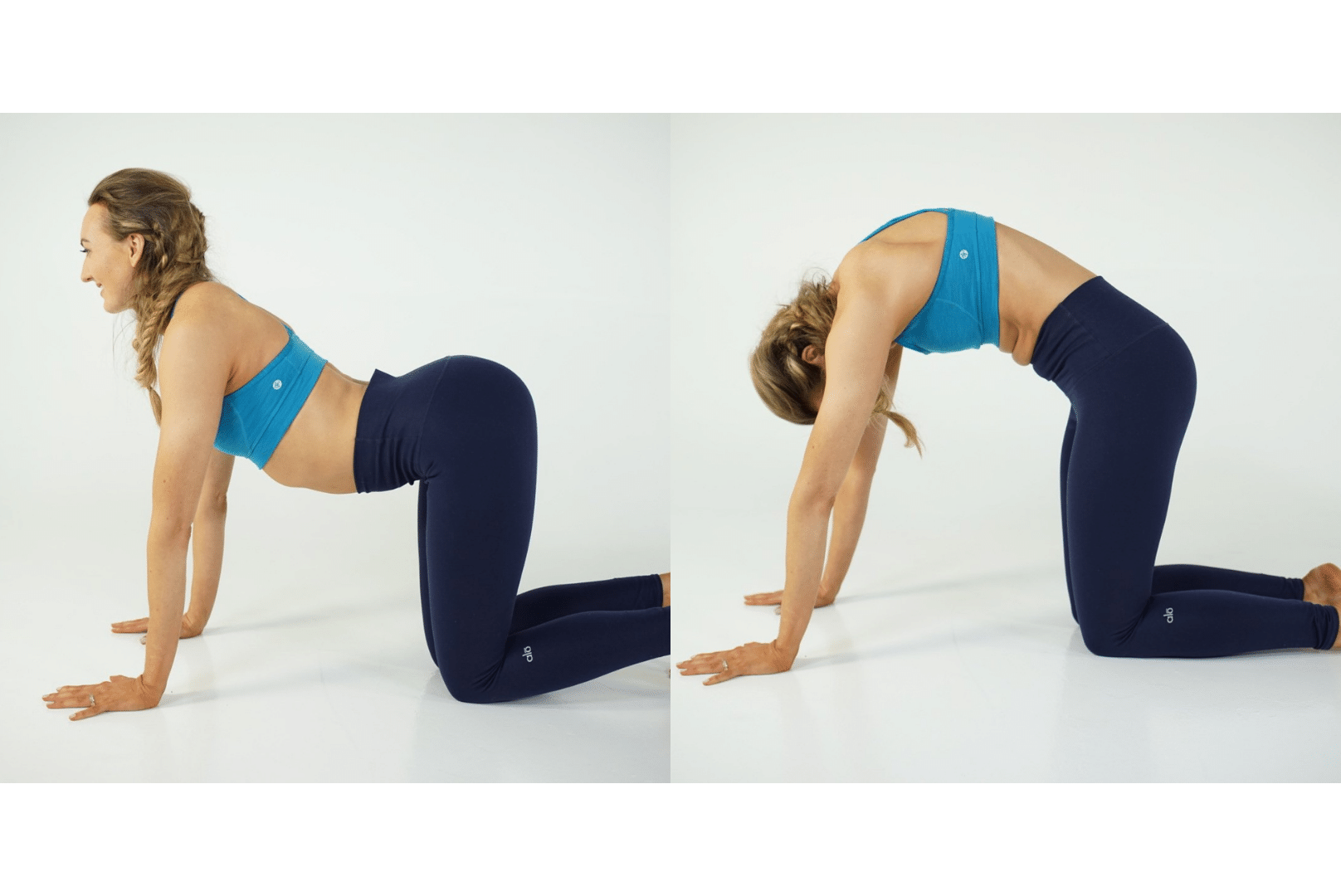
Come onto your hands and knees in a tabletop position. As you inhale, arch your back and lift your chest towards the ceiling, allowing your belly to drop towards the floor (cow pose).
Then, as you exhale, round your spine, tuck your chin to your chest, and draw your belly button towards your spine (cat pose).
Flow between these two movements with your breath, focusing on the sensations in your spine and pelvis.
These are just a few examples of somatic poses you can try. The good news? You can make any pose somatic by deepening your breath and putting your attention on the sensations in your body.
Somatic therapy is all about intuitive exercise – letting your intuitive body knowledge lead the way to improve not only your physical health, but your mental health too.
Common Questions About Somatic Exercise
As you delve into the world of somatic exercise, you may have some questions. Here are answers to two of the more common ones:
Do somatic exercises work?
Yes, somatic exercises have been shown to be effective in improving overall well-being by enhancing body awareness, reducing muscle tension, and promoting relaxation.
Research suggests that regular practice of somatic exercises can lead to improvements in flexibility, posture, and emotional regulation.
By focusing on internal sensations, these exercises help individuals develop a deeper connection with their bodies, leading to long-term benefits for physical and mental health.
What is somatic movement?
Somatic movement involves gentle, mindful exercises that aim to increase awareness of bodily sensations and promote relaxation.
Unlike traditional workouts that focus on external performance, somatic movement emphasizes internal perception, encouraging individuals to tune into their breath, muscles, and movement patterns.
By engaging in somatic exercises, you can release tension, improve mobility, and cultivate a stronger inner connection. Somatic movement practices draw from various disciplines, including yoga, Feldenkrais Method, and Alexander Technique, to offer a holistic approach to wellness. Eye movement desensitization is also a somatic therapy practice.
Closing Thoughts
The benefits of somatic movement and a somatic yoga practice are many. You can reduce anxiety, release trauma, and find inner peace. And you have everything you need. You just need to slow down, breathe deeply, and let your body lead the way.
It’s not just about deep stretches, it’s about connecting inward, really paying attention to the way your body feels. The best rule of thumb is to do what feels good.
Next Steps
- Take a deep dive into embodiment and somatic yoga with my Somatic Yoga certification program.
- If you’re interested in practical kriya yoga as a way to improve your daily life and relationships, check out my Yoga for Self Mastery course.
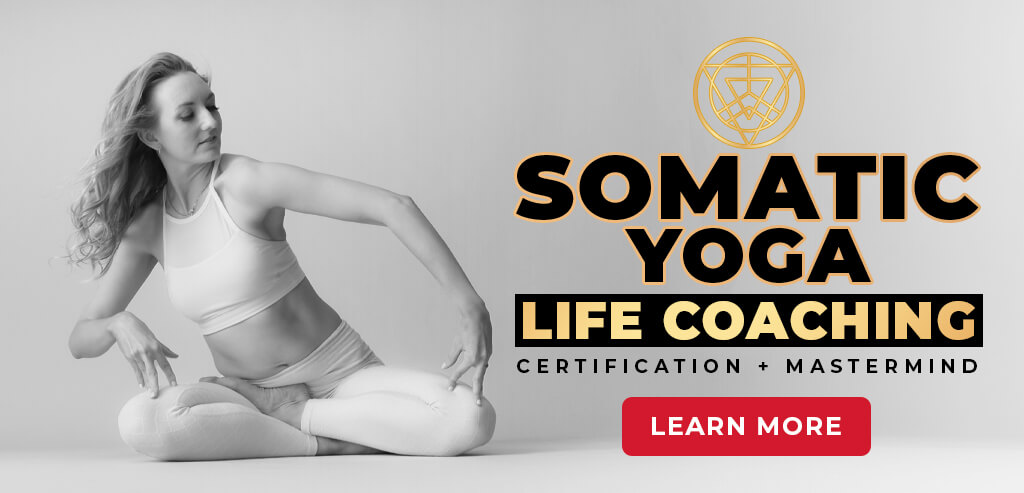
FREE Embodied Yoga Workshop (usually $67) Somatic Techniques & Cord Cutting Ritual

YOU MIGHT ALSO LIKE
- How Somatic Yoga for Anxiety Can Help You Find Calm and Balance
- Somatic Stress Release Techniques for Emotional Balance
- Progressive Muscle Relaxation Meets Yoga for Deep Sleep
- 5 Somatic Hip Exercises For Beginners
- How To Relieve Myofascial Pain with Yoga: Heal and Prevent Muscle Tension
- Somatic Energy Healing: Techniques to Realign and Restore Balance
- How Somatic Shaking Can Release Tension and Reset Your Nervous System
- How To Create Mindful Somatic Yoga Sequences Your Students Will Love
- Somatic Yoga Poses For Every Body And Mind
- 6 Hip Openers For Emotional Release
- What Are Myofascial Release Trigger Points?
- Integrating Mind and Body: The Benefits of Somatic Bodywork
- Somatic Stretching: A Gentle Approach to Flexibility and Stress Relief
- Somatic Workouts: A Guide to Healing and Connection
- Somatic Yoga for Weight Loss: A Holistic Approach

